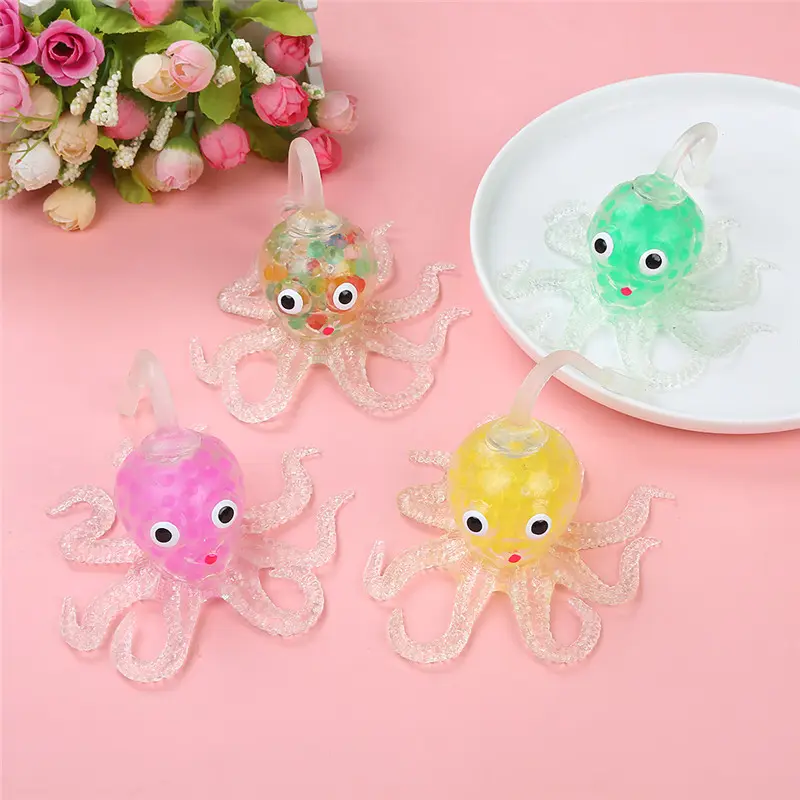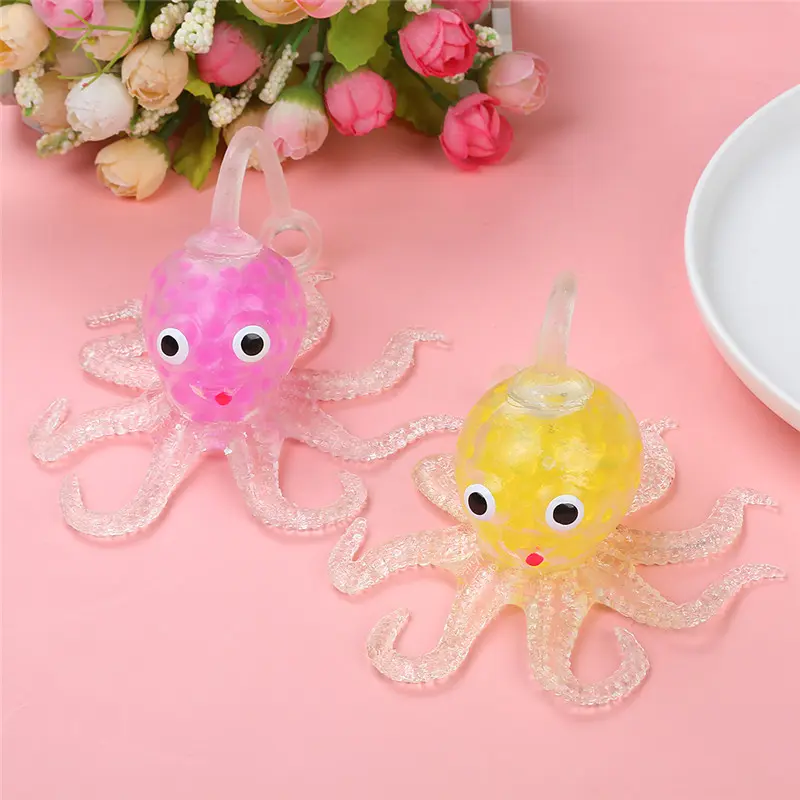How to ensure that TPR toys are non-toxic and harmless: creating a safe choice for international wholesale buyers
In today’s global toy market, TPR (thermoplastic rubber) toys are highly favored due to their unique characteristics and wide application. For international wholesale buyers, it is crucial to ensure that the TPR toys they purchase are non-toxic and harmless, which is not only related to the health and safety of consumers, but also directly affects the reputation and market share of the company. This article will explore in depth how to ensure that TPR toys are non-toxic and harmless, and provide valuable reference for international wholesale buyers.
1. Material properties of TPR toys
TPR is a polymer alloy material made by blending styrene elastomers SBS and SEBS as the base material and adding other components (such as PS, PP resin, white oil, filler calcium powder, compatibilizer, functional additives, etc.). Its basic ingredients do not contain toxic substances such as toluene solvents, and have good flexibility, high resilience, smooth and bright surface, etc. It is not easy to crack, and has good touch elasticity, which can bring consumers a comfortable use experience.
2. Key links to ensure that TPR toys are non-toxic and harmless
Raw material selection:
Environmentally friendly and non-toxic base materials: Select high-quality SBS, SEBS and other base materials to ensure that they do not contain toxic and harmful substances, and ensure the safety of TPR toys from the source. For example, the SBS and SEBS materials provided by some well-known suppliers have undergone strict quality testing and meet environmental protection standards, and can be used as a good basis for the production of TPR toys.
Safe additives: When adding PS, PP resins, white oil, filler calcium powder, compatibilizers, functional additives and other components, their quality and safety must be strictly controlled. These additives should comply with relevant food safety and environmental protection standards, and do not contain harmful substances such as heavy metals, polycyclic aromatic hydrocarbons, phthalates, etc., to avoid potential harm to human health.
Production process control:
Clean production environment: Keep the production site clean, hygienic and dust-free to prevent dust, impurities, etc. from mixing into the TPR material and affecting the hygiene and safety of the toys. For workshops producing medical-grade and food-grade TPR toys, dust-free workshops should be used for production and operation, and environmental conditions should be strictly controlled.
Reasonable processing technology: Use advanced processing equipment and scientific processing technology to ensure that TPR materials do not undergo adverse reactions such as degradation and cracking during processing, and avoid the production of harmful substances. For example, during the injection molding process, parameters such as temperature, pressure and time must be strictly controlled so that the TPR material can be melted evenly and fully fill the mold cavity, while avoiding the decomposition of the material due to excessive heating to produce toxic gases.
Strict quality monitoring: During the production process, TPR toys are strictly inspected and controlled for quality, including appearance inspection, dimensional measurement, performance testing, etc. Ensure that each toy meets the design requirements and quality standards, and promptly handle or destroy products that do not meet the standards to prevent unqualified products from entering the market.
Quality inspection and certification:
Physical performance test: TPR toys are tested for physical properties such as tensile strength, tear strength, hardness, and resilience to ensure that they have sufficient strength and durability during normal use and will not easily break or damage, thereby reducing the risk of small parts being accidentally ingested by children due to toy breakage. For example, some TPR decompression toys need to have good resilience to ensure that they can return to their original state during repeated squeezing, providing consumers with a good decompression experience.
Chemical substance detection: According to the toy safety standards of different countries and regions, the chemical substances in TPR toys are tested, such as heavy metal content, phthalate content, polycyclic aromatic hydrocarbon content, formaldehyde content, azo dye content, etc. Ensure that the content of these harmful chemicals is lower than the prescribed limit to protect the health and safety of consumers. For example, the EU EN71-3 standard strictly limits the content of 8 heavy metals in toys, and the US ASTM F963 standard also has clear provisions on the content of chemical substances such as phthalates.
Microbial testing: For some TPR toys that are in close contact with children, such as pacifiers and teethers, microbial testing is also required to ensure that there are no harmful microorganisms on the surface of the toys, such as bacteria, mold, yeast, etc., to prevent diseases caused by microbial contamination.
Packaging material testing: Check whether the packaging materials of TPR toys are safe, whether they contain harmful substances, such as heavy metals such as lead and cadmium, and whether environmentally friendly printing inks and adhesives are used to avoid secondary pollution of the packaging materials to the toys.
Certification: Obtaining relevant product certifications, such as the EU’s CE certification, the US’s CPSC certification, and China’s 3C certification, is an important basis for proving that TPR toys meet local safety standards. These certification bodies will conduct comprehensive testing and evaluation of toys. Only products that meet strict requirements can obtain certification certificates, thereby providing confidence assurance for international wholesale buyers and consumers.
3. Safety standards for TPR toys in different countries and regions
EU: The EU’s toy safety standards are among the most stringent in the world. In addition to the EN71 series of standards, such as EN71-3 toxic element test and EN71-9 organic compound analysis test, there are also REACH regulations. REACH regulations impose strict restrictions on chemical substances in toys, requiring companies to register, evaluate, authorize and restrict the chemical substances used to ensure that these substances do not cause harm to human health and the environment. For example, according to REACH regulations, the content of certain substances of very high concern (SVHC) in toys shall not exceed a certain limit, otherwise they will be banned from sale.
United States: The Consumer Product Safety Commission (CPSC) of the United States has formulated strict toy safety standards, such as the ASTM F963 standard. This standard covers many aspects of toys, such as mechanical and physical properties, combustion properties, and chemical properties, and also makes detailed provisions for the content of harmful chemicals in TPR toys. In addition, the United States has also implemented lead content restrictions on children’s products, requiring that the lead content in the surface coating of toys shall not exceed 90ppm and the lead content in the toy substrate shall not exceed 100ppm to prevent children from lead poisoning due to accidental ingestion of lead-containing toys.
China: China’s toy safety standards are also constantly improving and gradually aligning with international standards. For example, the GB 6675 series of standards regulates the mechanical and physical properties, combustion properties, and chemical properties of toys, and clearly stipulates the limits of heavy metal content and phthalate content in toys. At the same time, China has also implemented a mandatory product certification system (3C certification), requiring that toys sold domestically must pass 3C certification to ensure product quality and safety.
4. Matters that international wholesale buyers should pay attention to when choosing TPR toy suppliers
Supplier qualifications and reputation: Choose TPR toy suppliers with good qualifications and reputation, and check whether they have relevant production licenses, business licenses, quality management system certifications and other certificates, and whether they have passed ISO 9001, ISO 14001 and other international standard certifications. Understand the supplier’s market reputation, customer evaluation and historical performance, and give priority to those companies with good reputation, high credibility and stable product quality in the industry as partners.
Supplier production capacity: Investigate whether the supplier’s production facilities and equipment are advanced, and whether the production scale can meet its own procurement needs. A supplier with strong production capacity can more effectively ensure the stability of product supply and timely delivery of orders, and is also more capable of strictly controlling quality and safety during the production process.
Supplier’s quality control system: In-depth understanding of the supplier’s quality control system, including raw material procurement inspection, quality monitoring during production, finished product inspection and other links. Suppliers should establish a complete quality control system that can strictly control each production link to ensure the consistency and stability of product quality. Suppliers are required to provide detailed quality control documents and test reports to prove that their products meet relevant safety standards.
Supplier’s service and support: Evaluate the supplier’s service level and after-sales support capabilities, including the handling of product quality issues, order tracking, logistics distribution, technical support and other aspects. An excellent supplier should be able to respond to customer needs in a timely manner, provide high-quality pre-sales, in-sales and after-sales services, solve various problems encountered by customers during procurement and use, and provide strong support for the business operations of international wholesale buyers.
5. Conclusion
As a popular toy product, TPR toys need to be strictly controlled from multiple links such as raw material selection, production process control, quality inspection and certification to ensure non-toxicity and harmlessness. Different countries and regions have different safety standards for TPR toys. International wholesale buyers should fully understand and ensure that the products they purchase meet the relevant standards of the target market during the procurement process. By selecting suppliers with good qualifications, high credibility and strict quality control, international wholesale buyers can provide consumers with safe and reliable TPR toys, enhance their competitiveness in the market, and win the trust and satisfaction of consumers.
In short, ensuring that TPR toys are non-toxic and harmless is the common responsibility of the toy industry and international wholesale buyers. Only through the joint efforts of all parties can we create a safe and healthy toy consumption environment for global consumers and promote the sustainable development of the TPR toy industry.
Post time: May-12-2025

